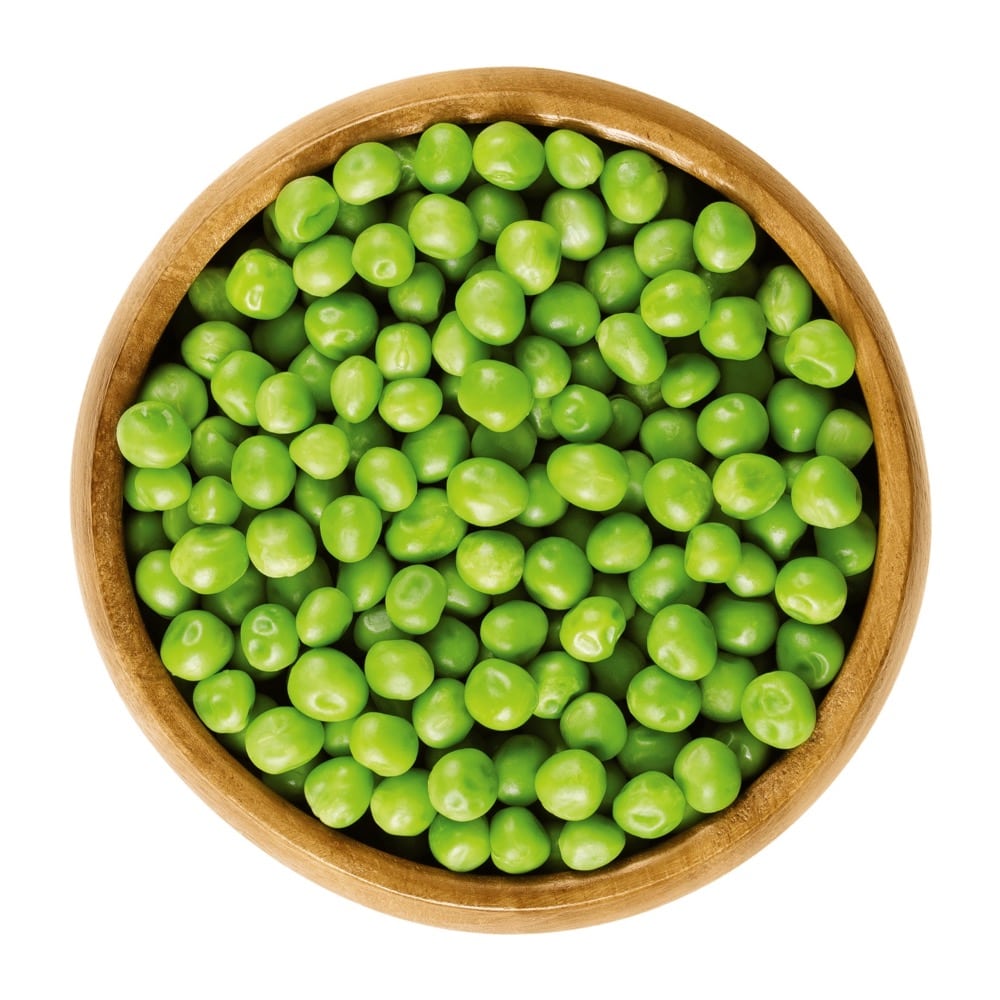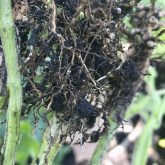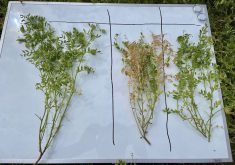Rob Stone says red lentils “drive the bus” on his farm at Davidson, Sask. Granted, he says canola does quite a bit of driving too. But the point is this: his pulse crop is so much more than just a break crop for canola.
Stone seeds about one-third of his land to lentils, on average. Why red lentils? They grow really well in the dark brown soil zone around Davidson — although they have not appreciated the “recent massive wet,” Stone says.
Read Also

Could crop sharing be a viable option for your farm?
Crop sharing could be a good option for young and beginning farmers.
He has lots of market options. “I can deliver them to my nearest elevator and get paid within an hour,” he says. And finally, they’re profitable. “In the long run, red lentils provide me with a much higher return than peas.”
Pulses are largely self-sufficient in nitrogen, using root nodules to fix nitrogen from the air. This means they can reduce fertilizer costs across the whole rotation. In some cases pulses can increase available nitrogen for the following crop. Pulses such as lentils and chickpeas also root shallower, which means they leave behind more water deeper in the soil profile. This water remains available for crops such as canola that can root deeper to access it. As well, pulses such as red lentils and peas are often ready to harvest earlier, which helps to spread the harvest window. (Fababeans can also spread harvest, but on the back end.)
Pulses also provide a break crop, making it possible for farmers to extend canola to one-in-three or one-in-four rotations, which has a proven benefit for management of blackleg and clubroot. “Results from that extra year are head and shoulders above the one-in-two canola rotation,” Stone says.
He says seed costs are comparatively low for red lentils, with its small seeds that go on at 40-50 lb./ac. He uses seed treatment and inoculant, often applies two fungicide passes and sprays about half his acres for aphids each year.
Lentils, given their short stature, are poor competitors with weeds, and in-crop weed control is often dominated by Group 2 products. Poor competition plus the increase in Group-2 resistant weeds means weed management in other rotation crops is essential, as are pre-seed and pre-harvest applications in the lentil years.
Other necessary expenses for most pulses, especially the ones that pod close to the ground, are a land roller, rock picker and flex header.
Stone’s preferences are for canola on cereal stubble and lentils on canola stubble because canola provides very good weed management ahead of lentils and wheat gains a lot from being on lentil stubble. Canola yields also gain from lentil stubble, so he’s not hard set on this rotation sequence.
“I usually see a five bu./ac. benefit with canola on lentils versus canola on cereals with the same fertility,” he says. “Cereals on lentils get a yield increase plus 0.5 to 0.8 percentage points more protein.” In the end, about half his lentils go on cereal stubble and half on canola stubble.
Pulses for the black soil zone
Through most of the black soil zone, peas tend to be the most common pulse crop, but soybean acres are moving up and fababeans can have a good fit. These crops tend to do better in more moist conditions, but excess moisture is still a problem.
Kris Mayerle at Tisdale, Sask., had good pulse crops in 2017, but that was the “first good result since 2009,” he says. “It has been just too wet.” As a result, he says, a lot of farmers in the area went out of pulses or greatly reduced their pulse acres over the past five years.
Mayerle stuck with peas and fababeans, though his acres have dropped, growing them in a rotation with canola and cereals as well as some hemp and flax. “For me, peas and fababeans mellow out the soil and add nitrogen to the soil,” he says. “We see these benefits in the following crops for at least two years afterward.”

Though nitrogen inputs are much lower for pulses, Mayerle says phosphorus is a “big bill.” So is seed. Fababeans, for example, are 330-700 grams per 1,000. “Snowbird variety is 480 grams per 1,000 and it can take four bu./ac. of seed to hit the target stand. With treatment and inoculant, the total seed costs can be around $50 per acre,” he says, adding that cost per acre for treated and inoculated pea seed is about the same.
Mayerle grows canola, then pulses, then cereals in rotation. He tries to seed fababeans after Roundup Ready canola to have the weed situation cleaned up. “And most years, we see an increase in yield and protein for our wheat following fababeans,” he says.
Why canola needs rotation crops
Disease is a major threat to canola yield and profitability, and crop rotation — particularly a two-year or three-year break between canola crops in a field — can provide a significant and valuable reduction in the threat from blackleg and clubroot in particular.
“Improved soil health and canola yield are other benefits,” says Justine Cornelsen, agronomy specialist for the Canola Council of Canada. “If a canola-wheat rotation is the only thing a grower has known, adding a pulse is branching away from the norm, but they will see long-term benefit from this added diversity.”
Agriculture and Agri-Food Canada (AAFC) research scientists based in Lacombe, Alta., have a long-term rotation study (nine years and counting) comparing continuous Liberty Link canola, continuous Roundup Ready canola, canola in a two-year rotation with wheat and canola in a three-year rotation with peas and barley. Trials were repeated at five locations across the Prairies.
When all sites and years are averaged, canola yield improved five bu./ac. with a one-year break and another five bu./ac. with a two-year break. While this is an average, results were quite different year to year and site to site. In Melfort, Sask., for example, there was no yield difference between rotations in 2012, but in 2016, canola yields were 17 bu./ac. higher with a one-year break and 34 bu./ac. higher with a two-year break.
When adding economic analysis to this study, net returns were similar for all rotations averaged across all sites and years.
A concluding document for the study has this statement: “These data refute the notion of continuous canola being the most profitable rotation. Furthermore, these data do not account for increased disease, insect pest and weed threats (from continuous canola) that are likely to threaten sustainable canola cropping over the long term.”
Barriers to pulses
Pulses themselves are susceptible to quite a few diseases. In a wet year — and we’ve had a few of those — disease management adds to input costs and greatly reduces yield.
Lentils and peas are susceptible to aphanomyces root rot, a damaging soil-borne disease that has spread aggressively with the wet cycle. For fields with aphanomyces, it can take a fairly long rotation to reduce its severity. Ascochyta in lentils and chickpeas can require multiple fungicide applications per year. Pulses are also susceptible to other root rots, powdery mildew and sclerotinia, all of which are worse with moisture. In wet years, red lentils can be “filthy with sclerotinia,” Stone says.
Disease damage in the wet cycle is a big reason growers are moving away from pulses in Mayerle’s area. “Peas in soggy soils get root rots and can turn yellow overnight,” he says. “In 2012 and 2013, we had good canola and wheat crops, but the peas went 15 to 20 bu./ac.”
Wet harvests make the situation even worse. Pulses that depend on good colour for grade — green peas, for example — can lose colour in a wet fall. Wet harvests also mean more earth tag on seeds, another downgrade factor.
Market uncertainty adds to pulse challenges. India’s high tariffs on peas and lentils mark a significant recent example. And Mayerle says fababeans basically have one export market right now — Egypt — and if Australia has a good crop, they can get fababeans to Egypt cheaper than Canada can.
Soybeans are attractive because they have a large export market, but short-season varieties may not provide consistent yields and good profit potential in all parts of Western Canada.
After all, profit potential remains a significant decision-driver.
“Farmers know the one-in-two canola rotation is not going to work for the long term, so they’re looking for other crops,” Mayerle says. “If farmers can get a consistently decent return from pulses, then they’ll grow more pulse acres and get all the other benefits.”
Stone says the same thing. “Farmers want to find ways to reduce disease in their number-one crop, canola,” he says, but for all the clear benefits of pulses in the rotation, “lentil prices have driven the rise in acres of the past two years.”
For Cornelsen, a sustainable long-term rotation has to look beyond the immediate profit potential for any one crop.
“Yields for all crops improve with diversity in the rotation, especially since extension of rotations helps manage many of the diseases we currently deal with in most crops,” she says. “For that reason, some of the yield and profitability of wheat and canola have to be moved over to the pulse side of the balance sheet when pulses are added to the rotation. That way, the full value of pulses is properly appraised.”
Jay Whetter is communications manager for the Canola Council of Canada. To compare features of the six pulse crops and how they fit with canola, go to canolawatch.org and search for the article “What pulses are best for your canola rotation?”















